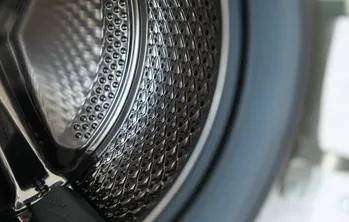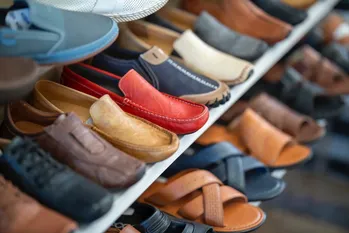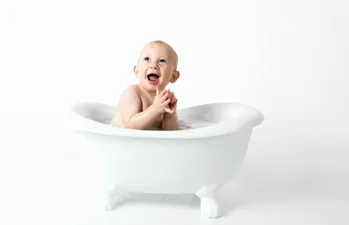I. Introduction
Laundry expenses can add up quickly, especially if you have a large family or frequently wear clothes made of fabrics that require frequent washing. According to a recent study by the National Bureau of Economic Research, households spend an average of $132 per year on laundry-related expenses. This figure includes not only the cost of detergent and fabric softeners but also energy consumption for washing, drying, and ironing clothes. However, there are several simple yet effective ways to reduce these costs significantly without compromising the cleanliness and quality of your clothing. In this article, we will explore these tips and share some insights into how they can help you save money on your laundry expenses.
II. Switch to a HE machine
One of the most significant changes you can make to lower your laundry costs is switching to a high-efficiency (HE) washing machine. Unlike traditional machines, HE washers use less water and energy per load because they spin clothes at higher speeds, extracting more moisture from them before drying. According to the US Department of Energy, HE machines can save you up to $350 over their lifetime compared to standard washers. Here's a breakdown of how these savings are made:
A. Explanation of HE (High Efficiency) machines and their benefits
HE washing machines use less water than traditional ones because they spin clothes at higher speeds, extracting more moisture from them before drying. This results in fewer loads to dry and less energy consumption overall. HE washers can save up to 1,000 gallons of water per year compared to standard models.
B. Disadvantages of traditional machines
Traditional washing machines use around 45 gallons of water for a single load, whereas HE washers use only around 25 gallons. This means that you can save a significant amount of money on your water bill by switching to an HE machine. In addition, HE machines also use less energy because they are designed to operate more efficiently. They have lower RPM (revolutions per minute) speeds during the spin cycle, which reduces energy consumption and noise levels.
C. Cost savings breakdown
A recent study by Consumer Reports found that an average household can save up to $140 per year on their water bills and $95 per year on their energy bills by switching to an HE washing machine. These savings can vary depending on factors such as the cost of water, the size of your household, and the frequency of laundry. However, investing in an HE machine is a smart long-term investment that will pay off over time.
D. Recommended brands/models
Some recommended HE washing machines include:
LG WM9000HVA: This front-loading washer features a massive capacity of 5.2 cubic feet, WiFi connectivity, and an Energy Star rating for energy efficiency. It also has a turbo wash feature that allows you to clean clothes in just 14 minutes.
Samsung WF50R8500AW: This top-loading washer features a large capacity of 4.7 cubic feet, an eco bubble feature that reduces water usage by up to 20%, and a smart care app that lets you monitor your machine's performance remotely.
III. Wash in cold water
Another simple way to save money on your laundry expenses is washing clothes in cold water instead of hot or warm. Cold water washes are gentler on clothes, helping them retain their color and shape better over time. Here's why:
A. Less energy consumption
Heating water uses a significant amount of energy, which can contribute to high utility bills. By washing clothes in cold water, you can reduce your energy consumption by up to 90%, according to the US Department of Energy. This translates into lower utility bills and a smaller carbon footprint.
B. Less wear and tear on clothes
Hot water can damage fabrics over time, causing them to fade, shrink, or lose their shape. By washing clothes in cold water, you can help preserve the quality of your clothes for longer. This is especially important for delicate items like silk, wool, and cotton.
C. Less detergent usage
Hot water can also cause detergent to break down faster, requiring more frequent refills and increasing overall costs. By washing clothes in cold water, you can reduce the amount of detergent you use, saving money on laundry supplies over time.
IV. Use a dryer ball
Another tip for reducing your laundry expenses is using a dryer ball instead of fabric softener sheets or liquid. Dryer balls are reusable, eco-friendly alternatives that help fluff clothes during the drying cycle, reducing drying times and energy consumption. Here's how they work:
A. Reduces static cling
Dryer balls can reduce static cling by up to 70%, according to the manufacturer Woolzies. This is because they create air pockets in clothes, helping them to separate and dry more quickly.
B. Reduces drying times
By reducing the amount of time it takes to dry clothes, dryer balls can help save energy costs over time. They also reduce wrinkles and prevent shrinking by allowing clothes to fluff up naturally during the drying cycle.
C. Reusable and eco-friendly
Dryer balls are reusable and last for several years, making them a more sustainable alternative to fabric softener sheets or liquid. They are also made from natural materials like wool or polyester and can be composted at the end of their life.
V. Air dry clothes when possible
Finally, another tip for reducing your laundry expenses is air drying clothes whenever possible instead of using a dryer. This can save you money on utility bills and help preserve the quality of your clothes over time:
A. Saves energy costs
Drying clothes in a dryer uses a significant amount of energy, especially if you're using a high heat setting. By air drying clothes instead, you can reduce your energy consumption and lower your utility bills over time.
B. Preserves the quality of clothes
High heat settings in a dryer can damage fabrics over time, causing them to fade, shrink, or lose their shape. By air drying clothes instead, you can help preserve the quality of your clothes for longer. This is especially important for delicate items like silk and wool.
FAQ Section
Q: How can I ensure that my laundry is still clean if I wash in cold water?
A: Cold water washing does not affect the cleaning performance of detergent as long as you're using an appropriate amount. Some detergents are specifically designed to work well in cold water, so be sure to check the label for recommendations. Additionally, if your laundry has heavy stains or odors, consider pre-treating them with a stain remover before washing in cold water.
Q: How often should I replace my dryer ball?
A: Dryer balls can last for several years with proper care. To help prolong their life, be sure to follow these tips:
- Clean your dryer ball regularly with warm water and mild soap. This will help remove any buildup from residue or detergent.
- Avoid using bleach on your dryer ball as it can break down the materials over time.
- Store your dryer balls in a cool, dry place when not in use to prevent mildew or mold growth.
Q: Can I still use fabric softener sheets with a dryer ball?
A: While you don't necessarily need fabric softener sheets with a dryer ball, they can still be used if desired. Just add the sheets to the dryer along with your dryer ball during the last few minutes of drying to help soften and fragrance the clothes. However, be sure to check the label on your dryer ball to make sure it's compatible with fabric softener sheets as some materials may react negatively.
VI. Conclusion
Reducing your laundry expenses doesn't have to be difficult or time-consuming. By implementing some simple tips like washing in cold water, using a dryer ball, and air drying when possible, you can save money on utility bills over time and help preserve the quality of your clothes for longer. Remember to also always follow care instructions on clothing labels to ensure long-lasting wear.











